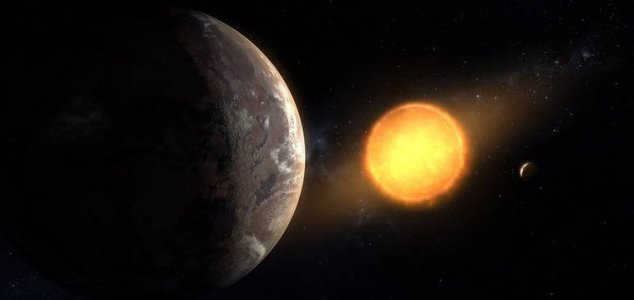Extraterrestrial
June 10, 2020 · 1 comment
1 comment

Dust could play a key role. Image Credit: NASA / Ames Research Center / Daniel Rutter
There are however other factors that can also play a part, as emphasized by a new paper that has looked into the role of airborne dust particles in a planet's atmosphere.
A large amount of atmospheric dust could, for example, make a planet inherently warmer than it would otherwise be, meaning that a dusty planet further out from its star could still support liquid water.
Similarly, airborne dust could also help to cool a planet that is nearer to its parent star.
The findings suggest that extrasolar planets written off as uninhabitable due to their location may in fact still be in the running should they be found to have a lot of dust in their atmospheres.
This may be especially true for 'synchronised orbit' planets, which are worlds where one side is perpetually locked into facing towards their parent star.
"On Earth and Mars, dust storms have both cooling and warming effects on the surface, with the cooling effect typically winning out," said lead study author Ian Boutle from the University of Exeter.
"But these 'synchronised orbit' planets are very different."
"Here, the dark sides of these planets are in perpetual night, and the warming effect wins out, whereas on the dayside, the cooling effect wins out."
"The effect is to moderate the temperature extremes, thus making the planet more habitable."
Source: Independent | Comments (1)
Dust could help make alien worlds habitable
By T.K. RandallJune 10, 2020 ·
 1 comment
1 comment
Dust could play a key role. Image Credit: NASA / Ames Research Center / Daniel Rutter
Scientists have highlighted the role of dust in cooling or warming an otherwise uninhabitable extrasolar world.
When it comes to determining whether any given world has the potential to host extraterrestrial life, there are many factors that come into play, including the size of the planet, its orbital period and whether or not it sits in the 'Golidlocks zone' - the region in which the temperature is not too hot and not too cold for liquid water to exist on a planet's surface.There are however other factors that can also play a part, as emphasized by a new paper that has looked into the role of airborne dust particles in a planet's atmosphere.
A large amount of atmospheric dust could, for example, make a planet inherently warmer than it would otherwise be, meaning that a dusty planet further out from its star could still support liquid water.
Similarly, airborne dust could also help to cool a planet that is nearer to its parent star.
The findings suggest that extrasolar planets written off as uninhabitable due to their location may in fact still be in the running should they be found to have a lot of dust in their atmospheres.
"On Earth and Mars, dust storms have both cooling and warming effects on the surface, with the cooling effect typically winning out," said lead study author Ian Boutle from the University of Exeter.
"But these 'synchronised orbit' planets are very different."
"Here, the dark sides of these planets are in perpetual night, and the warming effect wins out, whereas on the dayside, the cooling effect wins out."
"The effect is to moderate the temperature extremes, thus making the planet more habitable."
Source: Independent | Comments (1)

The Unexplained Mysteries
Book of Weird News
AVAILABLE NOW
Take a walk on the weird side with this compilation of some of the weirdest stories ever to grace the pages of a newspaper.
Click here to learn more

Support us on Patreon
BONUS CONTENTFor less than the cost of a cup of coffee, you can gain access to a wide range of exclusive perks including our popular 'Lost Ghost Stories' series.
Click here to learn more
Ancient Mysteries and Alternative History
Israel, Palestine and the Middle-East
United States and the Americas
Unexplained TV, Books, Film and Radio
Total Posts: 7,768,276 Topics: 325,020 Members: 203,765
Not a member yet ? Click here to join - registration is free and only takes a moment!
Not a member yet ? Click here to join - registration is free and only takes a moment!


































Please Login or Register to post a comment.